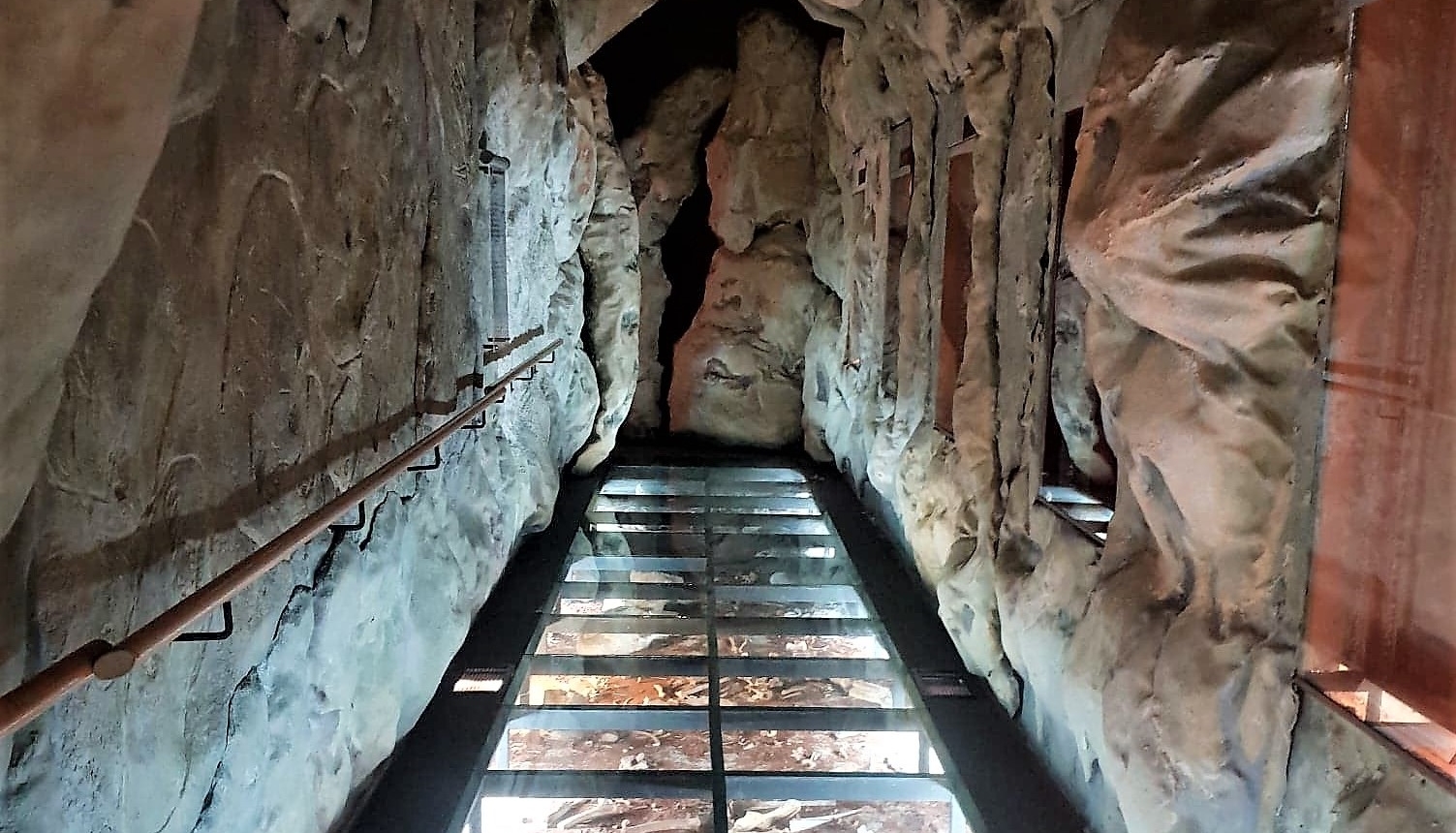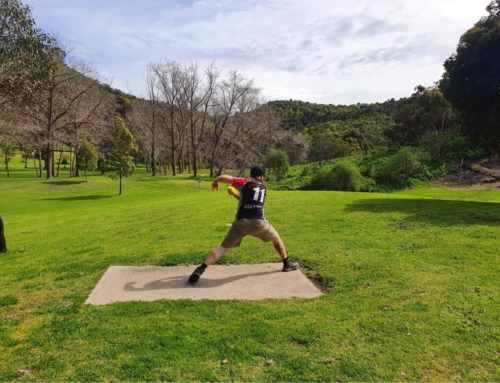A local cave diver has made a once in a life time discovery of prehistoric mega fauna fossils while diving in one of Mount Gambier’s largest cave systems. Among these fossils were the bones of Australia’s largest carnivorous mammal, the marsupial lion (Thylacoleo carnifex). Cave Divers and Scientist have worked together to piece together this piece of history, with it being an ongoing discovery.
To view a full report of the discovery, visit ABC South East SA.
Explore caves and fossils yourself!
Our region is full of unforgettable cave experiences that are hidden from sight. There are approximately 800 caves in the Limestone Coast region, and a cluster of the safest and most spectacular sites are accessible to you. Uncover the fossils and formations that makes our region so unique for yourself.
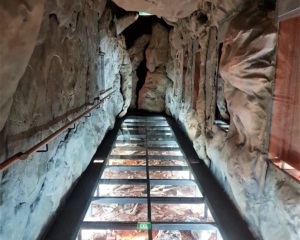
Cave Walk – Mount Gambier Visitor Centre
The Mount Gambier Visitor Centre’s interactive display allows you see fossils and rocks beneath your feet as you walk on the glass floor. View the remains of a short-faced kangaroo, that was previously discovered at a local cave, Tank Cave. Don’t forget to take a selfie with Simo!
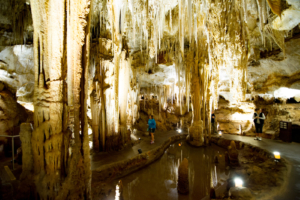
Tantanoola Caves
The wheelchair-accessible Tantanoola Caves are set into a cliff face and were once part of an ancient coastline – the evidence lies within, with seal bones and shells among the many fascinating finds.
The ocean’s gradual retreat left behind the cavern filled with spectacular stalactites and stalagmites, and knowledgeable tour guides are on hand to explain how the delicate formations developed.
Take the 500-metre loop hike leading to the top of the cliff for 360-degree views of the surrounding forest land, and enjoy a packed lunch in the pine-scented picnic grounds.
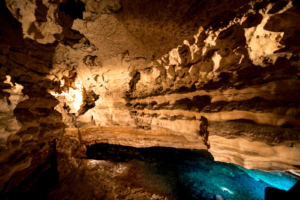
Engelbrecht Cave
Beneath Mount Gambier’s city streets, experienced divers can explore the secret tunnels of Engelbrecht Cave, carefully weaving their way through an intricate maze of water-filled passages while the world passes by overhead.
Two of the dry chambers, which serve as the diver entry point, are open for public tours and provide a fascinating window into the region’s geological past.
Engelbrecht Cave is a favourite place to visit and cave divers from around the world explore its secrets below the urban streets of Mount Gambier.
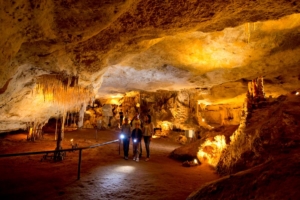
Naracoorte Cave
South Australia’s only World Heritage site is only an hour’s drive north of Mount Gambier. The Naracoorte Caves National Park contains a priceless fossil record of the ancient animals that once roamed the local landscape.
The Wonambi Fossil Centre brings the extinct creatures back to life and demonstrates how the caves acted as pitfall traps, preserving their skeletal remains for up to 500,000 years.
Four caves are open to the public for self-guided, guided and adventure caving tours, while the rest are used for scientific research, with paleontologists still unearthing chapters of our past.
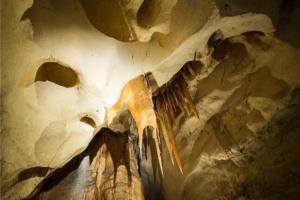
Princess Margaret Rose Cave
Just across the South Australian – Victorian state border in the Lower Glenelg National Park, Princess Margaret Rose Cave features varied hues of crystalline structures created by centuries of minerals and tannins filtered through the soil.
Most limestone caves are formed by water seeping down through cracks and fault lines in the limestone, dissolving the rock and creating fissures and tunnels. The formation of Princess Margaret Rose Cave, however, was assisted by water from the Glenelg River which worked its way along a fault line for approx 500m. Take the guided tours and gain an understanding of the fragility of this natural wonder.
Uncover more of our geological wonders here.

